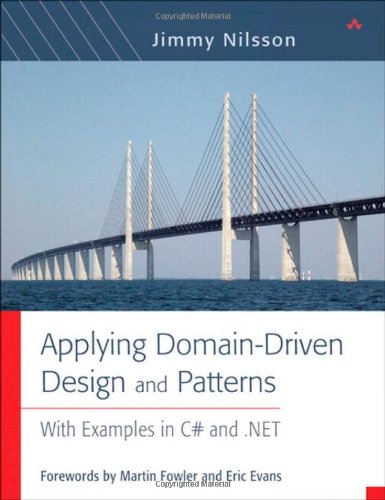Applying Domain-Driven Design and Patterns: With Examples in C# and .NET ebook download
Par slone mark le mardi, juillet 4 2017, 21:33 - Lien permanent
Applying Domain-Driven Design and Patterns: With Examples in C# and .NET. Jimmy Nilsson

Applying.Domain.Driven.Design.and.Patterns.With.Examples.in.C.and.NET.pdf
ISBN: 0321268202,9780321268204 | 576 pages | 15 Mb

Applying Domain-Driven Design and Patterns: With Examples in C# and .NET Jimmy Nilsson
Publisher: Addison-Wesley Professional
Common Design Patterns in C# 4.0 Part8: Bridge Pattern. I've finished reading Jimmy Nilsson's recent book Applying Domain-Driven Design and Patterns: With Examples in C# and .NET. There are many examples and discussions on i.e. The UI should do as little as possible, and be "stupid"; Use documented patterns and principles. My goal: Develop modules that with little or no modification can stand on their own; Changing or reworking the UI should be as easy as possible (i.e. In our example we will be creating a stock market application, which will use the Observer Pattern to notify Observers (in our case investors) when a stock has reached a certain price so they can purchase the stock. Very few people could claim to have done full-on-balls-to-the-wall DDD, due to the relative “newness” of the book, and the time the ideas it contain talk to peculate down. Applying DDD and Patterns My first impression is that the book lacks focus. Short Description: Separate implementation and object interfaces. When running the example you can see that everything is working as expected and that the correct classes are instantiated during runtime. DDD, Dependency Injection, CQRS, SOA, MVC but not so many examples on how to put them all together in a flexible way. Usage: Sometimes used, useful to decouple an abstraction from its implementation and to They should contain specializations which only apply to specific Repositories.